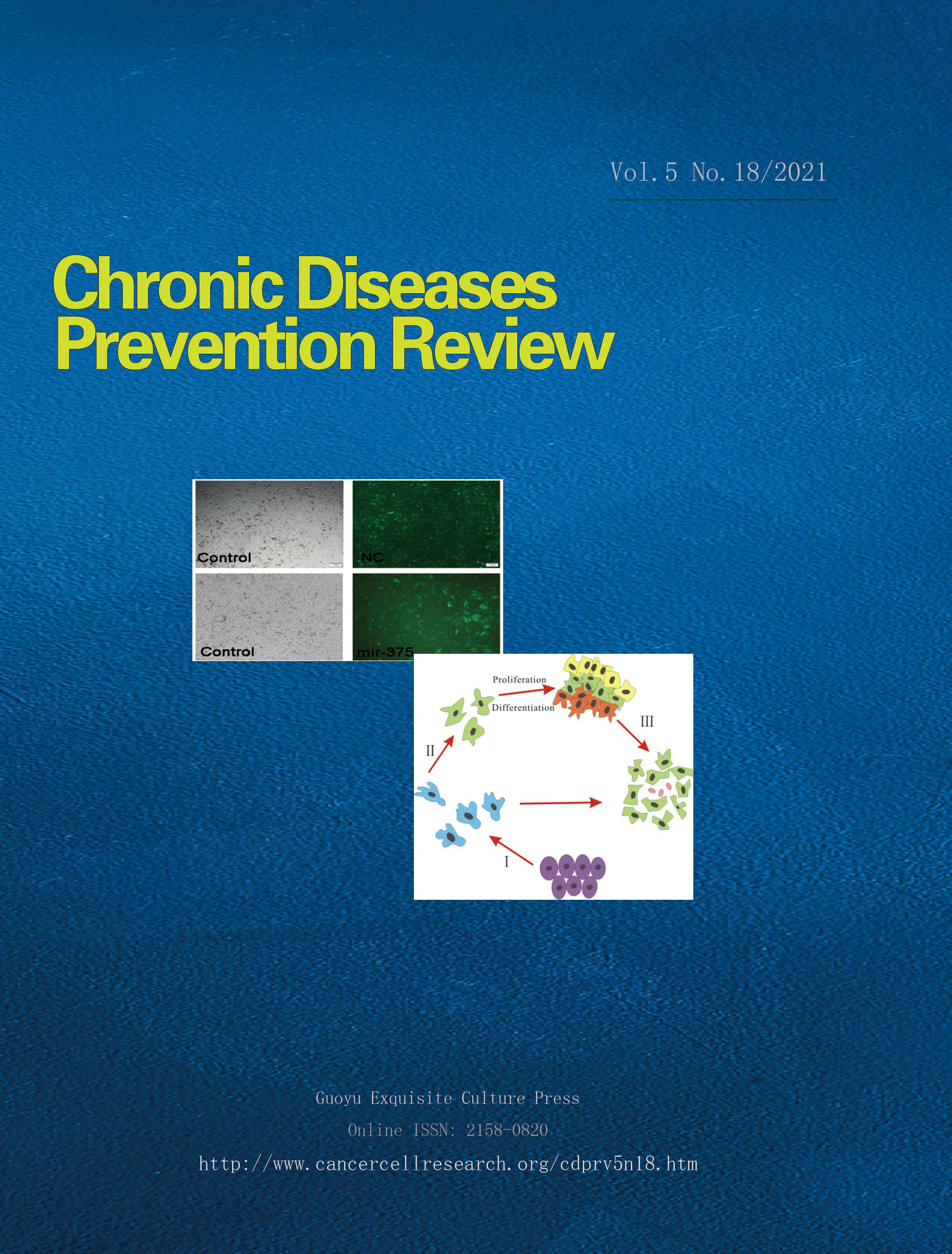Chronic Diseases Prevention Review (Online ISSN: 2158-0820)
Current Issue
Vol.6 No.21
Article: The role of PKC ι and HPV in the immune microenvironment of cervical cancer and its clinical significance
by Guoping Wang, Shengmin Chen, Zhiren Lin, Ying Liang, Feng Yuan
Chronic Diseases Prevention Review 2022 6(21) 1-10; published online 15 October 2022
Abstract: Objective: To explore the role and clinical significance of PKCl and human papillomavirus (HPV) in the immune microenvironment of cervical cancer. Methods: RT-PCR, Immunohistochemistry and Flow cytometry assays were used to detect the high-risk HPV infection rate, PKCl / YAP1 level, and CD3+, CD4+, CD8+ levels, respectively. Results: The HPV infection rate was 53.89%. The levels of PKCand YAP1 in CINI, CINII, CINIII and cervical squamous cell carcinoma tissues were higher than normal cervical tissues (P<0.05). Moreover, the higher the CIN grade, the higher the levels of PKCl and YAP1. The CD3+ and CD4+ levels in CINI, CINII, CINIII and cervical squamous cell carcinoma tissues were lower, while CD8+ levels were higher than normal cervical tissue (P<0.05; P<0.05). The positive rate of PKC/YAP1 in patients with high-risk HPV infection was negatively correlated with CD3+ and CD4+ levels (P<0.05), while positively correlated with the CD8+ level (P<0.05). Conclusions: Cervical cancer patients are often accompanied by abnormal expression levels of PKCl /YAP1 and CD3+, CD4+ and CD8+, and there is a close relationship between the two, which can regulate the immune microcirculation of patients with cervical cancer.
Open Access Download (free) PDF
Article: Value of three phase enhanced CT histogram parameters in preoperative prediction of clinicopathological grade of hepatocellular carcinoma
by WeiLong Zeng, Hui Zhou, QingShan Liu
Chronic Diseases Prevention Review 2022 6(21) 11-15; published online 15 October 2022
Abstract:
Objective: Preoperative noninvasive prediction of histological grade of hepatocellular carcinoma remains a challenge. Tumor perfusion is closely related to the occurrence and invasion of hepatocellular carcinoma. Here, the aim of this study was to evaluate the role of quantitative perfusion parameters, corresponding histogram parameters, and tumor density (represented by CT values) in predicting the histological grade of hepatocellular carcinoma by traditional three-phase dynamic contrast-enhanced CT scanning. Methods: A total of 80 cases of pathologically confirmed hepatocellular carcinoma were included in this retrospective study. According to the presence or absence of poorly differentiated hepatocellular carcinoma, patients were divided into two groups: 55 cases with poorly differentiated hepatocellular carcinoma; Twenty-five cases were not poorly differentiated, including well-differentiated hepatocellular carcinoma and moderately differentiated hepatocellular carcinoma. The CT values of tumors at different scanning phases were measured, and the hepatic artery blood supply coefficient (HAC), portal vein blood supply coefficient (PVC) and arterial enhancement fraction (AEF) of tumor tissues and surrounding normal tissues were calculated by CT images. Then the heterogeneity of tumors was analyzed by histogram parameters. The relationship between CT perfusion parameters and histogram parameters and different histological grades of tumors was analyzed and receiver operating characteristic curve analysis was used to determine the best parameters for predicting tumor histological grade. Results: The difference of AEF histogram parameters in the moderate-high HCC group was higher than that in the poorly differentiated HCC group (P < 0.05). The difference between total tumor blood flow and total liver blood flow and the relative blood flow (rHF = AHF/HFllver) in the medium-high hepatocellular carcinoma group were significantly higher than those in the poorly differentiated hepatocellular carcinoma group (P < 0.05). There was no significant difference in other hepatic perfusion parameters and related histogram parameters between the two groups. The CT values of the poorly differentiated hepatocellular carcinoma group S were significantly lower than those of the moderate-high hepatocellular carcinoma group S in the plain scan phase (TAu), portal vein phase (TAp) and equilibrium phase (TAe) (P < 0.05). Conclusion: The tumor perfusion parameters, corresponding histogram parameters, tumor CT values at different scanning phases and the difference of tumor CT values at different phases of HCC based on three-phase enhanced CT scan are helpful to predict the differentiation degree of HCC noninvastively before surgery.
Open Access Download (free) PDF

